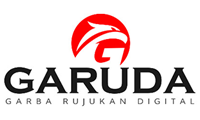An Analysis of Associative Meaning in Tourism Magazine
Abstract
This study examined associative meanings in the English-Indonesian edition of the tourism magazine Api Bali (February–March 2020). Using a qualitative approach grounded in Geoffrey Leech’s (1981) theory, the analysis focused on identifying connotative, social, affective, and collocative meanings. The findings revealed that word and phrase choices were strategically employed to uphold the prestige of Bali’s tourism products and destinations. Affective meanings, in particular, were used to create a positive emotional appeal and foster an optimistic perception of Bali. These results highlight the significance of associative meaning in shaping reader engagement and enhancing the communicative impact of tourism content.
References
Amelia, M. R. (2020). An Interpretation Analysis of Associative Meaning towards Obama’s Speech Entitled This is Your Generation’s World to Shape (Bachelor's thesis). Universitas Teknokrat Indonesia. http://repository.teknokrat.ac.id/2636/4/skripsi16111032.pdf
Assegaff, D. H. (1983). Jurnalistik Masa Kini (Pengantar Praktek Kewartawanan). Jakarta: Ghalia Indonesia.
Chaer, A. (2012). Linguistik Umum. Jakarta: Rineka Cipta.
Finch, G. (2003). How to Study Linguistics: A Guide to Study Linguistics: A Guide to Understanding Language.
Geoffrey, L. (1981). Semantic: The Study of Meaning. England: Penguin Books Ltd.
Hidayati, H., et al., (2018). The Semantics Study of English Slang Used in The Column Cosmo Magazine. Paedagoria: Jurnal Kajian, Penelitian dan Pengembangan Kependidikan, 4(2), 55-70.
Irfan, A. H. (2017). The analysis of associative meaning in Samsung advertisement slogan. Unpublished Bachelor’s Thesis). Sunan Kalijaga State Islamic University. Special Region of Yogyakarta. Indonesia. https://scholar.google.com/scholar?hl=id&as_sdt=0%2C5&q=Irfan%2C+A.+H.+%282017%29.+The+analysis+of+associative+meaning+in+Samsung+advertisement+slogan&btnG=
Jurafsky, J. (2019, August 22). The power of language: How words shape people, culture. Stanford News. https://news.stanford.edu/2019/08/22/the-power-of-language-how-words-shape-people-culture/
Keraf, G. (2004). Diksi dan Gaya Bahasa. Jakarta: Gramedia Pustaka Utama.
Lyons, R. (1968). Semantics. In H. H. Lunt & H. W. Simpson (eds.), The Linguistic tradition: Essays in honor of Charles F. Hockett (pp. 400-421). New York: Holt, Rinehart & Winston.
Miles, M. B. (1994). Qualitative data analysis: An expanded sourcebook. Thousand Oaks.
Mwihaki, A. (2004). Meaning and use: a functional view of semantics and pragmatics.
Suryawati, I. (2011). Jurnalitik: Suatu Pengantar Teori dan Praktek. Bogor: Ghalia Indonesia.
Tarigan, H. G. (1985). Pengajaran Semantik. Bandung: Angkasa.
Copyright (c) 2025 International Journal of Linguistics and Discourse Analytics

This work is licensed under a Creative Commons Attribution-ShareAlike 4.0 International License.







